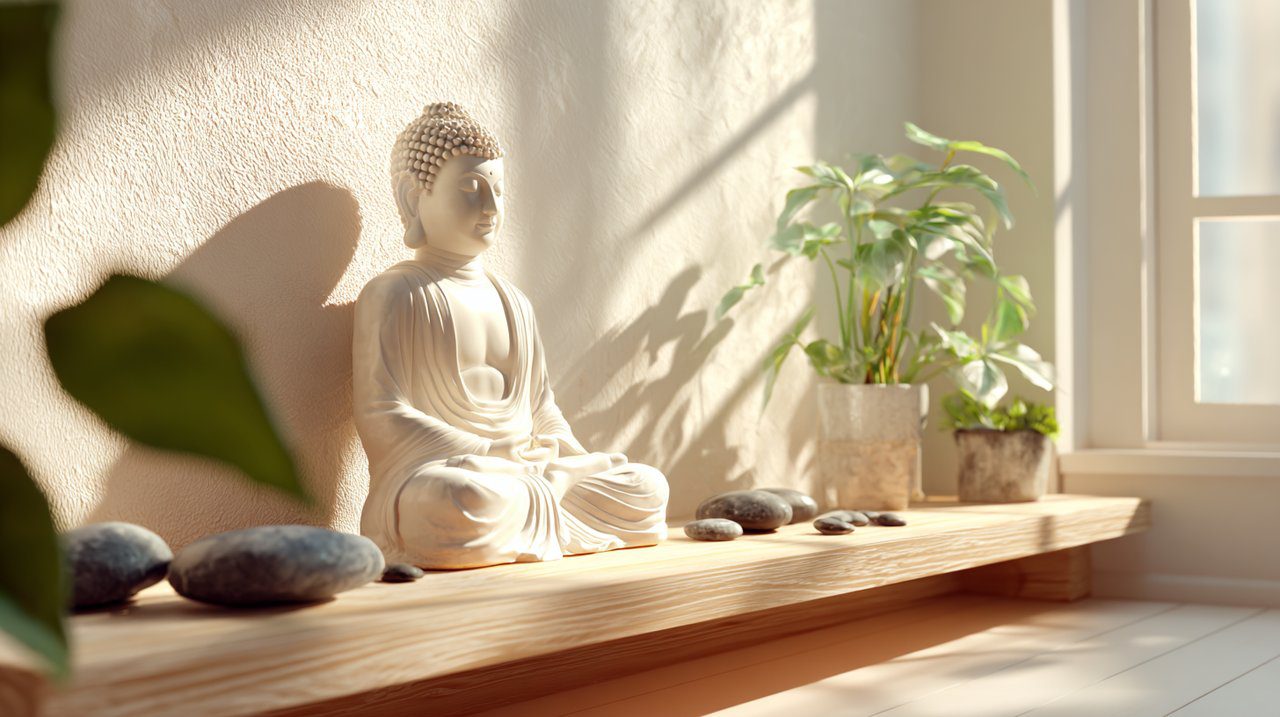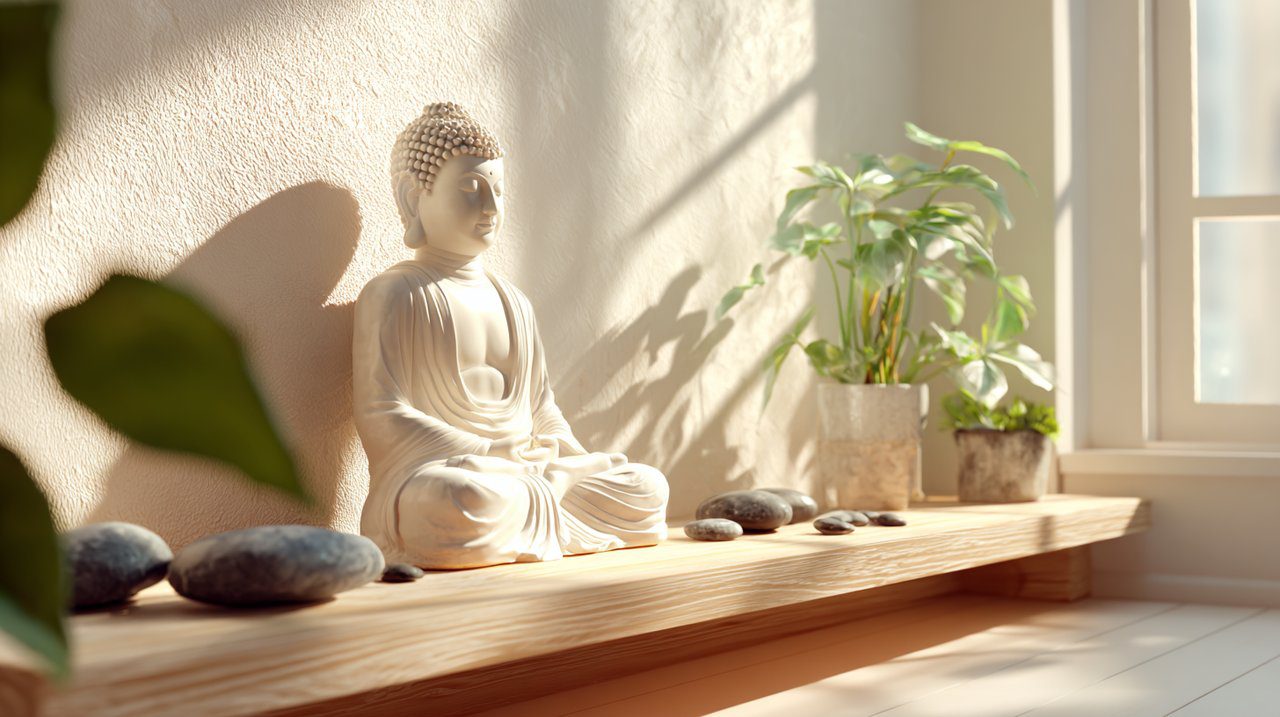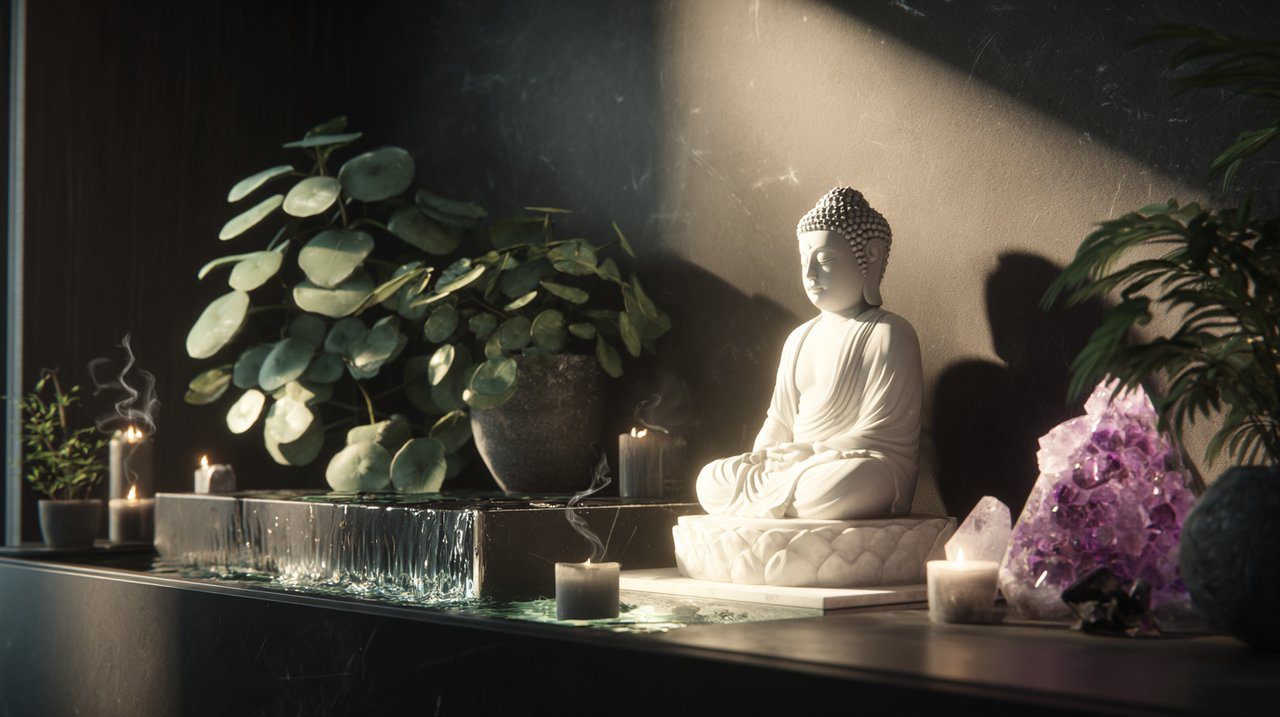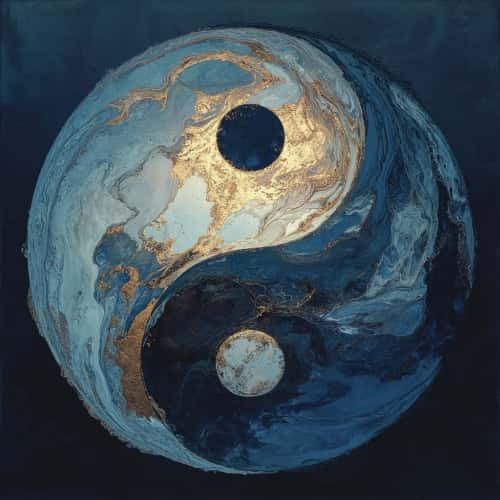White Buddha Statue: A Rational Guide to Meaning, Placement & Harmony
We all seek spaces that offer a moment of quiet, a gentle pause from the everyday. That instant feeling of calm when you enter a room isn’t mystical; it’s often a direct response to the thoughtful arrangement of objects around you. A white Buddha statue, far from being just a decorative item, stands as a potent symbol intentionally placed to cultivate peace.
For me, Alex Chen, the fascination lies in the underlying logic: how intentional choices in our surroundings genuinely influence our daily well-being. This isn’t about blind belief; it’s a practical application of environmental psychology, shaping our mood and mindset through our immediate environment.

The Pure Radiance: Decoding the White Buddha’s Symbolism
The color white naturally evokes ideas of new beginnings, purity, and clarity of thought across many cultures. When a Buddha statue is crafted in white, these powerful associations become even more pronounced. It’s more than just an aesthetic choice; it’s a clear intention to foster a specific, serene atmosphere in your personal space.
Clarity and Enlightenment: More Than Just a Color
From a psychological standpoint, white is often linked to feelings of cleanliness, simplicity, and a readiness for a fresh start. In color psychology, white is understood to promote mental clarity and reduce visual clutter, which can subtly alleviate feelings of anxiety. This aligns perfectly with the journey toward inner peace.
Observing the statue’s serene expression can gently guide your thoughts toward mindfulness, much like the rhythmic count of a mala beads necklace helps focus meditation. Understanding the deeper meaning behind colors, especially in spiritual contexts, can further enhance this experience. Makna Warna Manik Spiritual: Panduan Lengkap Simbolisme Mala & Meditasi
Mudras: The Silent Language of Posture
Beyond its color, the specific postures and hand gestures—known as mudras—on a Buddha statue convey distinct meanings. For me, these are not just poses; they are visual affirmations, silent messages that represent key teachings or pivotal moments in the Buddha’s journey toward enlightenment. Understanding these gestures transforms the statue into a more resonant prompt for self-reflection.
- Dhyana Mudra (Meditation Mudra): With hands resting gently in the lap, palms up, fingertips touching, this mudra is a visual invitation to deep calm. Philosophically, it embodies the perfect balance of thought, encouraging a state of profound stillness where the mind can settle and insights can emerge. It’s an anchor for focused introspection.
- Bhumisparsha Mudra (Earth Witness Mudra): The right hand touches the earth, symbolizing the Buddha’s unwavering resolve during his enlightenment. This gesture philosophically asserts truth and resilience, reminding us that inner wisdom is grounded in reality. It’s a powerful visual reminder of steadfastness against distractions.
- Abhaya Mudra (Fearlessness Mudra): The right hand raised, palm facing outwards, this mudra acts as a clear visual sign of protection and reassurance. In Buddhist teachings, it represents the dispelling of fear and the offering of peace. Psychologically, it can evoke a strong sense of security, much like a reassuring gesture from a trusted friend.
By choosing a mudra that resonates with your personal aspirations, you can transform your statue into a focused reminder for your own inner journey, a subtle prompt to cultivate specific qualities in your daily life.
Feng Shui’s Logic: Strategic Placement for Harmony
Feng Shui, often misunderstood as a series of mystical rituals, is, at its core, an ancient system of environmental psychology. It’s all about intelligently optimizing your living space to enhance your well-being and the natural flow of energy.
For me, placing a white Buddha statue according to Feng Shui principles isn’t about appeasing deities; it’s a rational approach to creating a harmonious environment. It actively supports your spiritual and mental health by influencing your subconscious perception of the space.
Effective Zones for Peace and Personal Growth
When deciding where to place your white Buddha statue, consider the specific feeling or focus you wish to cultivate. The most impactful spots are those that naturally support peace, thoughtful reflection, and an overall positive atmosphere, primarily through their psychological effect on you and your guests:
- Meditation or Yoga Space: This is a powerful choice because the statue immediately reinforces the area’s purpose. It acts as a dedicated visual anchor, signaling to your mind that this is a sanctuary for spiritual practice and quiet contemplation.
- Living Room: Positioning it facing the main entrance creates a gentle visual welcome. This sets a peaceful and inviting tone for anyone entering your home, psychologically reducing any initial feelings of unfamiliarity or tension and establishing a calm, grounding focal point for social interactions.
- Study or Office: A smaller statue on your desk serves as a subtle yet effective reminder for focus and clarity. The white color itself contributes to a sense of calm, helping to reduce stress and mental clutter during demanding tasks, essentially acting as a mini mental reset button.
- North-East (Knowledge & Self-Cultivation): In traditional Feng Shui, the North-East sector is associated with personal growth and wisdom. Placing your white Buddha here visually amplifies its symbolic meaning for these vital areas of your life, creating a psychological prompt to prioritize learning and self-improvement.

Avoiding Common Placement Errors
Understanding where *not* to place your statue is equally crucial. These aren’t arbitrary rules; they stem from a practical understanding of how our environment subtly influences our perception and comfort levels, affecting the statue’s psychological impact:
- Bathrooms or Toilets: These areas are strongly associated with cleansing and disposal. Placing a spiritual symbol here can psychologically diminish its perceived value or feel incongruous, which might lessen its positive suggestive power and sense of peace. It simply creates a jarring mental association.
- Directly on the Floor: Elevating the statue on a clean table or shelf is a simple yet significant act of respect. Psychologically, this elevates its importance in your mind, reinforcing its role as a meaningful focal point rather than just another object at ground level.
- Facing a Wall or Door: Ideally, the Buddha should face into the room or towards an open space. This visually suggests an open flow of positive energy and invitation. Facing a wall can feel restrictive and limiting, while facing directly opposite a door might create a subtle sense of confrontation or exposure, disrupting the intended calm.
- Bedroom (Unless for specific meditation): While some individuals find a Buddha statue calming in the bedroom, it’s generally advised to keep it out of direct view from the bed or in a less prominent spot. The goal is to avoid any visual cues that might subtly interfere with the pure relaxation needed for sleep, unless its presence is specifically integrated into a pre-sleep meditation practice.
More Than an Object: Cultivating a Mindful Environment
The Psychology of Dedicated Spaces
The simple act of designating a space as ‘sacred’ or ‘mindful’ profoundly alters how we interact with it. It gently nudges us toward a state of heightened awareness and respect for that area. This psychological transformation is precisely why a Buddha statue can be so effective.
When you thoughtfully place a white Buddha statue, you are, in essence, carving out a small sanctuary within your home. This dedicated spot, regardless of its physical size, becomes a powerful focus for your practices and a consistent visual prompt for mindfulness. It’s a tangible reminder to pause, breathe, and reconnect with your inner calm, effectively turning a part of your home into a personal retreat.

Enhancing Serenity Through Sensory Elements
To truly amplify the serene atmosphere around your white Buddha statue, consider adding elements that naturally complement its purpose. These aren’t arbitrary choices; they are selected for their specific contributions to a particular feeling or their symbolic meaning that supports tranquility:
- Natural Elements: Incorporate plants with soft, rounded leaves to introduce living growth and freshness. A small, gently flowing water feature can add soothing sounds, visually representing calm and continuous flow, which many find deeply relaxing. Just as the Koi fish symbolizes perseverance in its flow upstream, water features can symbolize resilient calm.
- Healing Crystals: Stones like clear quartz (for clarity), amethyst (for peace), or selenite (for purification) can be placed nearby. From a psychological viewpoint, focusing on their intended properties powerfully reinforces your own mental intentions for peace or clarity, acting as tangible reminders of your aspirations.
- Subtle Aromas: Incense or essential oils such as sandalwood or lavender are often used to create an environment that naturally encourages relaxation and meditation. These aromas prepare the mind for stillness and focus, adding another layer to the sensory experience of calm.
- Symbolic Animals: Placing a small statue of an animal associated with wisdom or strength, like those depicting elephants cultural and spiritual symbolism, near your Buddha can add another layer of visual narrative and intention to your space, enriching its symbolic depth and reminding you of complementary virtues.
Beyond the White: Personalizing Your Path to Peace
While a white Buddha statue offers a universally recognized image of peace, your personal path to harmony is uniquely your own. The core idea of deliberate placement and understanding symbolic meaning extends to countless other aspects of your home and life.
For example, just as a Buddha statue encourages calm, a Pixiu figurine might be placed elsewhere to visually suggest attracting prosperity. This illustrates how different symbols can serve specific psychological or aspirational purposes within a broader, holistic approach to home harmony, each acting as a distinct visual prompt for your goals.
Ultimately, a white Buddha statue can become a potent, focused reminder for inner peace, clear thinking, and personal growth. When you truly understand its symbolism and arrange it thoughtfully, guided by rational Feng Shui principles, you are doing more than just decorating. You are actively transforming a simple object into an integral part of creating a more balanced, harmonious, and supportive environment for yourself. This intentional shaping of your space makes a subtle, yet profoundly real, difference in your daily life and mindset.
💡 Pertanyaan yang Sering Diajukan
The color white is psychologically associated with new beginnings, purity, clarity of thought, peace, and a clean, uncluttered mind. When applied to a Buddha statue, it amplifies these concepts, serving as a constant visual anchor for aspirations towards inner peace and a fresh start, contributing to a calming effect.
Mudras are silent visual cues that represent specific Buddhist teachings or pivotal moments. The Dhyana Mudra (meditation posture) invites calm and introspection. The Bhumisparsha Mudra (earth witness) symbolizes enlightenment, truth, and resilience. The Abhaya Mudra (fearlessness) offers protection and reassurance. Choosing a mudra that aligns with personal goals can make the statue a more meaningful reminder for one's inner journey.
Effective placements include a meditation or yoga space to reinforce its purpose, the living room facing the main entrance to set a peaceful tone, or a study/office for focus and clarity. In Feng Shui, the North-East sector is also recommended for its association with personal growth and wisdom, amplifying the statue's symbolism.
Avoid placing it in bathrooms or toilets due to their association with cleansing and disposal, which can diminish its perceived value. Always elevate it on a table or shelf as a sign of respect. Ideally, it should face into the room or an open space, not directly at a wall or door, to encourage positive energy flow. It's also generally advised to avoid direct view from the bed in bedrooms unless specifically for meditation.
Complementary elements include natural items like plants with soft leaves or a gentle water feature for a sense of growth and calm flow. Healing crystals such as clear quartz or amethyst can reinforce intentions for clarity and peace. Subtle aromas like sandalwood or lavender incense can encourage relaxation, and symbolic animal statues can add layers of meaning.







